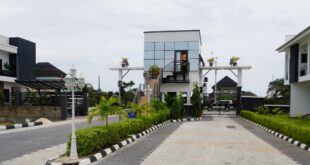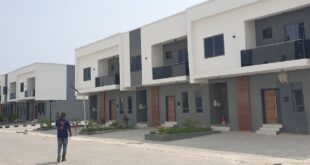|
Other TV reception modes in Nigeria and Ghana currently include terrestrial, cable and IPTV |
||||||||||||||||||||||||||||||||||||||||||
|
A new study has shown that Satellite TV reception increased by 23% in Nigeria and 19% in Ghana in 2019, two years after the last study was conducted. On 25 June, SES, the leader in global content connectivity solutions, unveiled the results of its annual Satellite Monitor survey, which reveals a steady increase in the penetration of satellite TV across Africa. The study on TV reception also shows an increase in SES reach from 33 million African households in 2018 to 35 million households in 2019. In Nigeria, the Satellite Monitor results revealed that satellite TV reception was the choice for 11.8 million households in 2019, a 23% increase compared to 2017, and a further 4.7 million in Ghana, up by 19% from 2017. The study also highlighted that High Definition (HD) TV sets are becoming increasingly popular, already present in approximately 50% of Ghanaian and Nigerian TV homes. Other TV reception modes in Nigeria and Ghana currently include terrestrial, cable and IPTV. According to the latest survey results, satellite TV is steadily gaining popularity as the TV reception mode of choice in both markets, with 70% of TV homes in Ghana and 33% of those in Nigeria opting for satellite in 2019 – an increase from 64% and 27%, respectively, compared to 2017. TV reception modes (in million homes)
The Satellite Monitor results show that SES also increased its reach across the broader African continent. In addition to the growth of homes reached in Nigeria and Ghana, the study shows that SES’s satellites reach 11.6 million homes (satellite and terrestrial) in anglophone West Africa; 6.2 million satellite homes in francophone West Africa; 17.7 million homes (satellite and terrestrial) in sub-Saharan Africa; and 0.9 million satellite homes in East Africa. “The results of our annual Satellite Monitor market research demonstrate that satellite continues to be the optimal infrastructure to deliver hundreds of TV channels and in high picture quality too, while offering an affordable solution in the transition from analogue to digital TV,” said Clint Brown, Vice President of Sales and Market Development for SES Video in Africa. “With the deadline for the analogue switch-off looming in both countries – 2020 in Ghana and 2021 in Nigeria – the 2019 Satellite Monitor findings confirm that end consumers in regions going through digital migration are satisfied with satellite TV and choosing it for its better value proposition and variety of free-to-air offerings, rather than purchasing new hardware and switching to digital terrestrial TV.” This SES annual market research offers a comprehensive and in-depth analysis into the TV market in each country it surveys and is designed to assess the development of TV reception modes and SES’s total reach in the market, as well as to serve as a benchmark for the TV and satellite industry. In 2019, Ghana and Nigeria were the main surveyed African countries as they stand as the most dynamic and highly penetrated TV markets in sub-Saharan Africa and have been surveyed by SES since 2015. Report distributed by APO Group on behalf of SES. |
||||||||||||||||||||||||||||||||||||||||||
Check Also
The world converges at Bazaar Berlin 2023
From 8 to 12 November, around hundreds of exhibitors from all over the world will …
 THE AFRICAN COURIER. Reporting Africa and its Diaspora! The African Courier is an international magazine published in Germany to report on Africa and the Diaspora African experience. The first issue of the bimonthly magazine appeared on the newsstands on 15 February 1998. The African Courier is a communication forum for European-African political, economic and cultural exchanges, and a voice for Africa in Europe.
THE AFRICAN COURIER. Reporting Africa and its Diaspora! The African Courier is an international magazine published in Germany to report on Africa and the Diaspora African experience. The first issue of the bimonthly magazine appeared on the newsstands on 15 February 1998. The African Courier is a communication forum for European-African political, economic and cultural exchanges, and a voice for Africa in Europe.


























